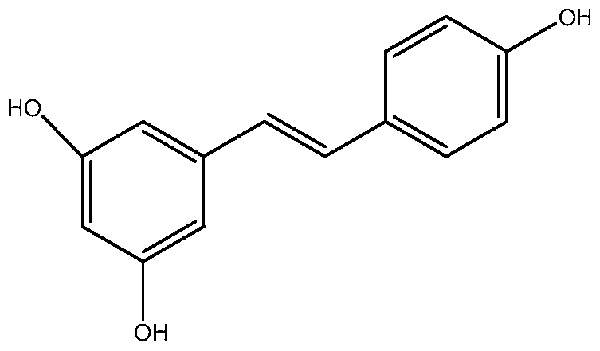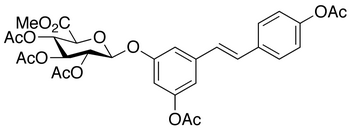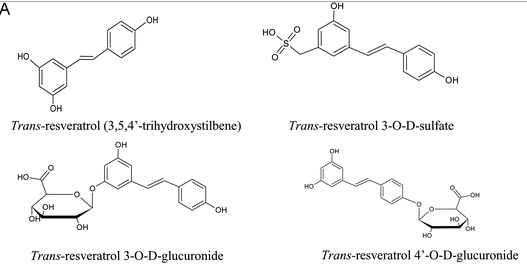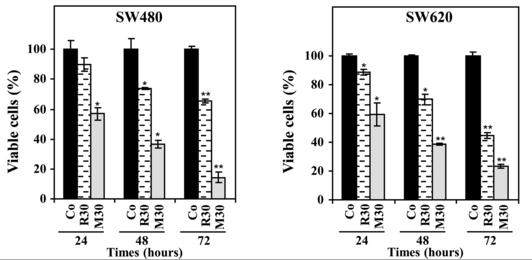ResveratrolConsumer
avert online
consumer fraud
ResveratrolQuiz
test your knowledge
New E-Book
How the world got lost on
the road to an anti-aging pill
Subscribe to our newsletter to receive email notifications when new articles are posted.
April 16, 2014: by Bill Sardi
At the first international resveratrol conference in Denmark (Resveratrol 2010) the working group stated that the evidence was “not sufficiently strong to justify recommendation for the chronic administration of resveratrol to human beings, beyond the dose which can be obtained from dietary sources.” [Annals N Y Academy Science 2013 Jul; 1290:1-11]
An often heard issue is the lack of bioavailability of resveratrol. This is caused by the attachment of detoxification molecules (sulfate, glucuronate) to resveratrol as it passes through the liver.
Early reports claimed:
“The oral bioavailability of resveratrol is almost zero due to rapid and extensive metabolism.“ [Molecular Nutrition Food Research 2005, 49; 472-481]
“All attempts to find measurable levels of resveratrol in human blood plasma after an oral dose at any time point in six volunteers failed.” [Drug Metabolism and Disposition 32 (12), 1377-1382; 2004]
Even more recent reports still claim resveratrol is not biologically available. Researchers say:
“An increasing number of recent studies have aimed at designing novel resveratrol formulations to overcome its poor solubility, limited stability, high metabolization and weak bioavailability.” [Journal Controlled Release 2012 Mar 10; 158(2):182-93]
“The so-called ‘Resveratrol Paradox’, i.e., low bioavailability but high bioactivity, is a conundrum not yet solved in which the final responsible actor (if any) for the exerted effects has not yet been unequivocally identified. [Current Pharmaceutical Design 2013; 19(34):6064-93]
Various technologies have been experimentally employed to enhance the bioavailability of resveratrol. These include use of nano-sized particles [Expert Opinion Drug Delivery 2014 Mar 24] and use of oral lozenges to facilitate sublingual (under the tongue) absorption. [PLoS One 2014 Feb 26; 9(2):e90131]
However, it appears resveratrol IS biologically available and this false claim is being used to justify money-making patents (see below).
A recent report states:
“If experimental results are promising, its application in humans encounters some difficulties… because of its low bioavailability. … Recent patents allow improvement of its bioavailability.…. These patents allow optimizing its effects in order to obtain an adjuvant agent for treatment.” [Recent Patents Anticancer Drug Discovery 2014 Mar 27 online]
In other words, these researchers assert resveratrol is not fully effective in its present form and must be combined with other drugs (used as an adjuvant) to be effective.
However, a growing number of reports indicate resveratrol bound to (conjugated with) detoxification molecules (sulfate, glucuronate) as it passes through the liver IS biologically available.
Resveratrol is delivered to target tissues in a stable sulfate-conjugated form and that the parent compound is gradually regenerated in selected cells and may give rise to the beneficial effects in vivo. At doses considered to be safe in humans, resveratrol generated via this route may be of greater importance than the un-metabolized form. [Science Translational Medicine 2013 Oct 2; 5(205):205]
Despite claims that resveratrol exhibits low bioavailability in living systems, the same favorable biological effects and anti-cancer properties are retained by its liver metabolites as its parent molecule. [Molecular Nutrition Food Research 2013 Jul; 57(7):1170-81]
Another report says that resveratrol attached to glucuronate presents equal and comparable activity to unbound resveratrol. [Chembiochem 2013 Jun 17; 14(9):1094-104]

Plan resveratrol

Resveratrol glucuronate
Yet another report counters the prevailing misconception that resveratrol is not bioavailable:
“The new research shows that the chemical can still be taken into cells after it has been metabolized into resveratrol sulfates. Enzymes within cells are then able to break it down into resveratrol again – meaning that levels of resveratrol in the cells are higher than was previously thought. There is considerable commercial interest in developing new forms of resveratrol that can resist or overcome the issue of rapid metabolism. Our results suggest such products may not actually be necessary to deliver biologically active doses of resveratrol to people.” [Medicalxpress.com 2013]
In the following sets of graphics readers can visualize plain (unbound) resveratrol and its metabolized forms (attached to sulfate and glucuronate). The graphs below surprisingly show that plain resveratrol (R30) reduces the growth of cancer cells but in its liver metabolized form (combined sulfate and glucuronate forms- M30) it has a far more profound effect. [Science Translational Medicine 2013 Oct 2; 5(205):205ra133]


Even if resveratrol is not biologically available and this is deemed to be a drawback, the combination of resveratrol with other molecules (like quercetin) improves the immediate bioavailability of resveratrol. [Xenobiotica 2000 Nov; 30(11):1047-54]
Other attempts have been made to alter the resveratrol molecule itself by adding molecular tags.

Above is an example of a resveratrol-like synthetically-produced molecule (analog) advertised as a candidate drug highly effective against numerous malignancies. International Journal Molecular Sciences 14 (11), 22483-98, 2013]
However, nature has its own way with pharmaceutical manipulation. A recent study says that pharmaceutical exploitation of resveratrol is thwarted by the fact resveratrol via liver metabolism progressively regenerates back to the form of the parent molecule after its absorption. [Molecular Pharmacology 10 (7): 2781-92, 2013] This makes some of the efforts to scientifically disparage resveratrol and substitute synthetically-made resveratrol-like molecules almost laughable.
Meanwhile, resveratrol dietary supplements are producing beneficial health effects in human eyes, arteries and among diabetics. Regardless of the mistaken concerns over lack of bioavailability, resveratrol IS producing health benefits in humans, though only a small number of human studies have been performed.
Despite the fact initial research involving resveratrol emanated from its presence in wine and lower rates of mortal heart attacks among wine-drinking Frenchmen [Lancet 339 (8808: 1523-26, 1992], a leading heart researcher says translation of research science from the research lab to the clinical arena “has been unexpectedly slow.” [Current Atherosclerosis Reports 13 (6), 439-46, 2011]
This foot-dragging is occurring in the face of elderly patients who suffer from symptoms of recurrent chronic shortage of oxygen-rich oxygen to heart muscle and have “no good options for intervention.” [Recent Patents Cardiovascular Drug Discovery 2009 Jun; 4(2):119-32] Elderly patients facing progressive and irreversible loss of vision due to macular degeneration are also being ignored as current therapy is not beneficial to 20-30% of patients. [Current Opinion Ophthalmology 25 (3) 158, 63, 2014]
Until pharmaceutical entities can figure out how to profiteer from patentable resveratrol-like molecules it appears that patient needs are simply being disregarded. By and large, modern medicine is shunning resveratrol and helpless patients appear to be paying the price. ®2014 Bill Sardi ResveratrolNews.com
Posted in Resveratrol
Add comments »